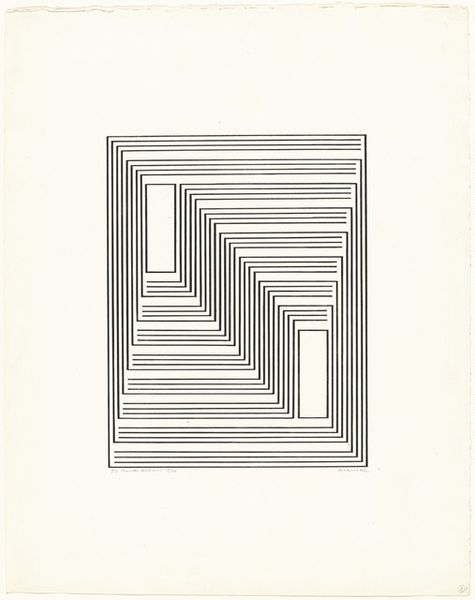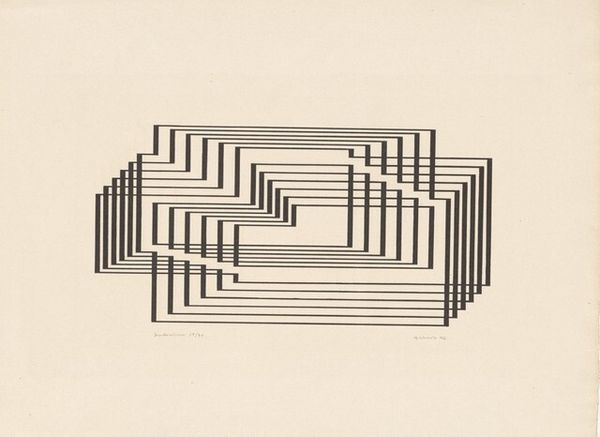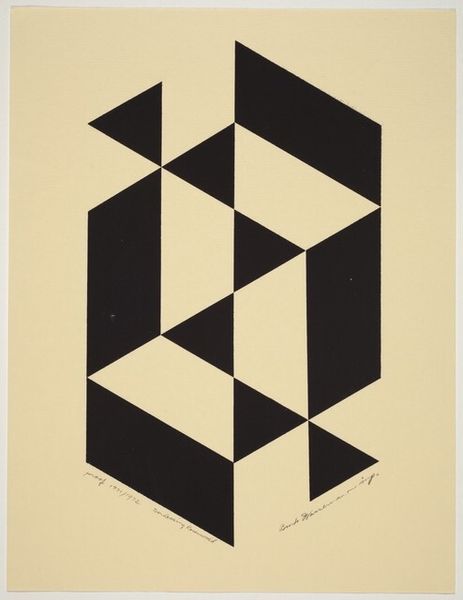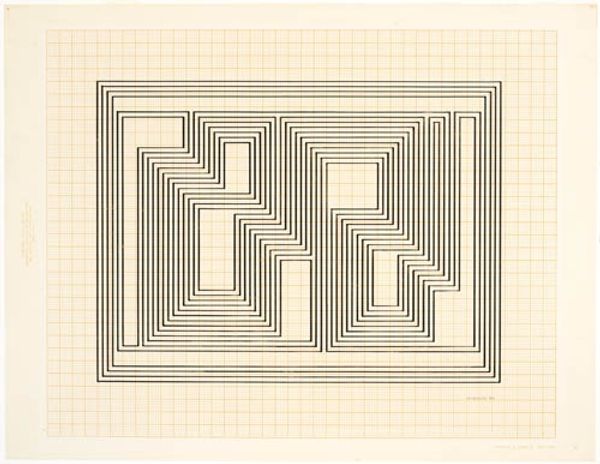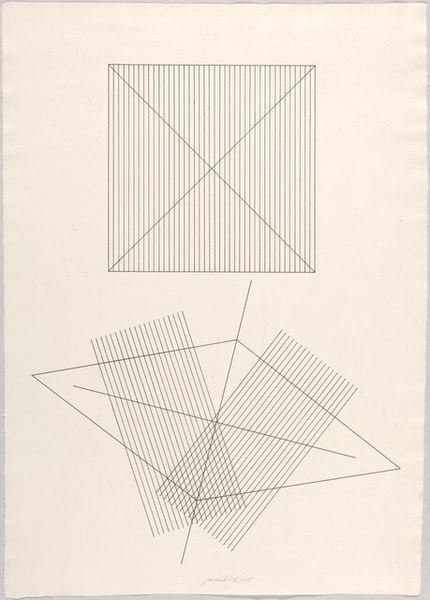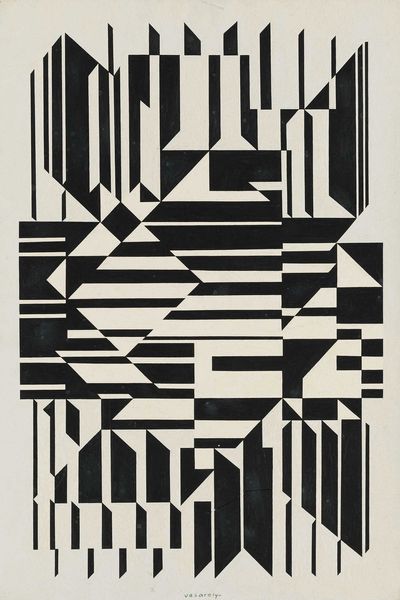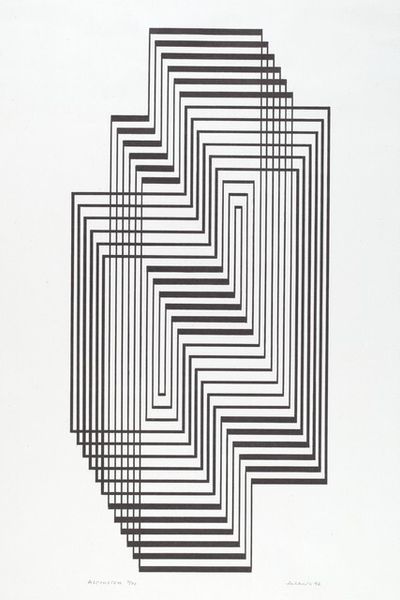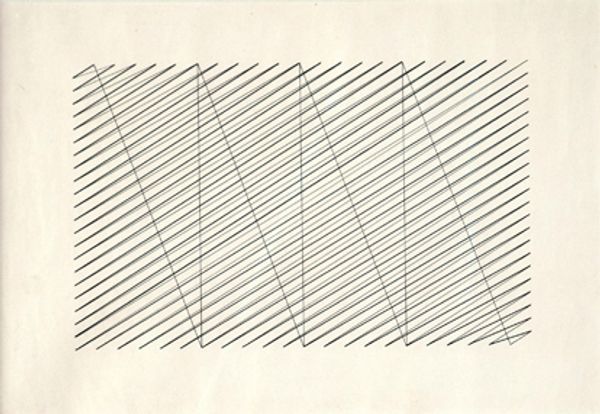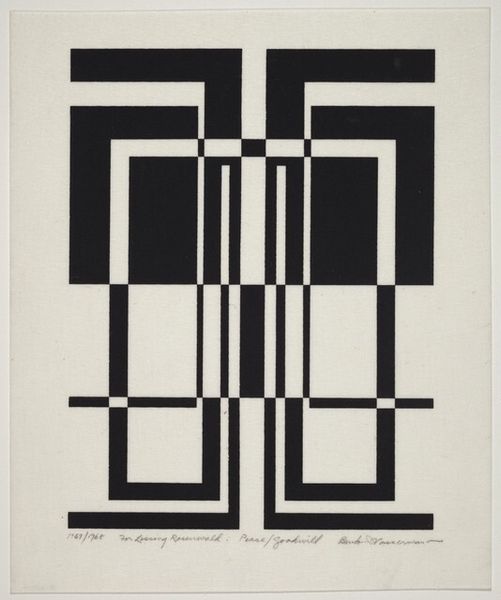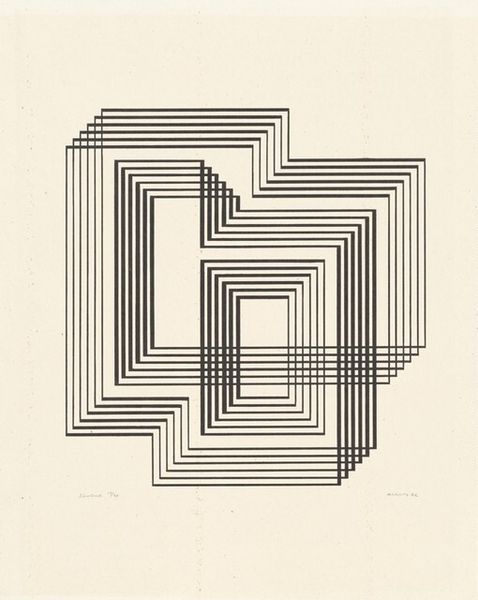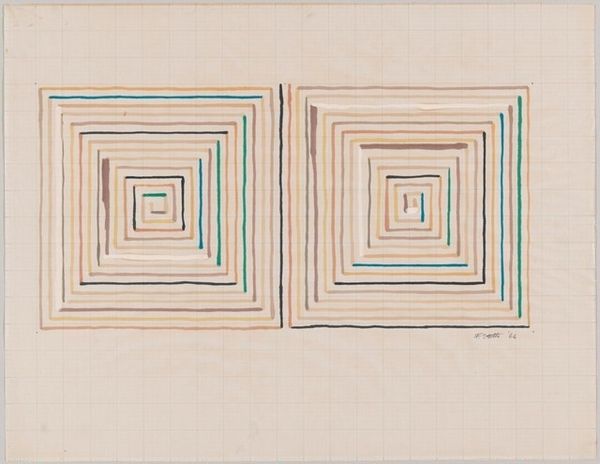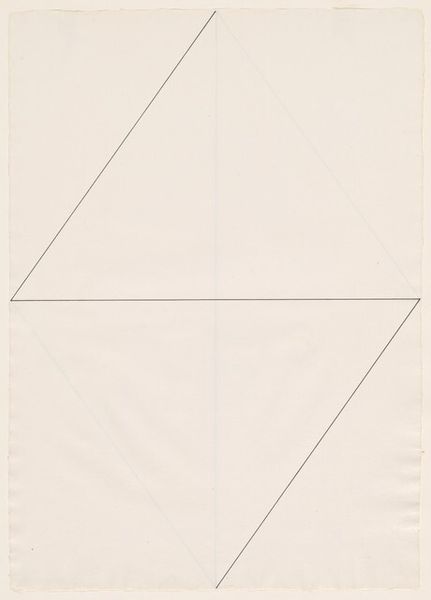
drawing
#
drawing
#
geometric
#
geometric-abstraction
#
abstraction
#
line
#
modernism
Dimensions: overall: 41.2 x 36.1 cm (16 1/4 x 14 3/16 in.)
Copyright: National Gallery of Art: CC0 1.0
Curator: Looking at Josef Albers’s “Composition,” created in 1941, I’m immediately struck by the austerity of the palette and the meticulous geometric structure. It seems deceptively simple. What's your take? Editor: Well, my first thought is that it resembles an abstract maze or labyrinth, conjuring a sense of ordered disorientation. The repeating shapes are evocative of some deeper visual encoding. Curator: It's worth remembering that Albers, pre-dating this piece, was deeply involved with the Bauhaus, an incredibly influential, but ultimately dismantled art school shuttered by the Nazi regime. Albers, with his Jewish wife, fled to America in 1933. This geometric abstraction feels, in some ways, like a visual manifestation of displacement, a mind working on systems of order and containment while the world outside descends into chaos. Editor: That really hits home, especially given the linear and repetitive quality—the stark black lines set against the grid remind me of institutional architecture, or blueprints…it conveys that structured approach to space and place. Perhaps these geometric shapes, then, become symbolic vessels. But vessels of what? Are they psychological or sociological containers? Curator: Perhaps they're about the containment of grief and anxiety at a very specific and politically fraught moment in time? How did one contain the uncontainable rise of Fascism, the loss of one's homeland? For Albers, maybe it was through these explorations of rigid structure. It feels connected to modernist ideals of functional design imposed, often forcefully, onto a world threatening to unravel. Editor: Yes, and thinking more iconographically, grids appear throughout cultures as representations of order, of man imposing structure onto nature. Albers's use feels purposeful here. It brings to mind scientific illustration, cartography even. His geometric form could be mapped terrain of emotional experience, a new vocabulary born from cultural trauma. Curator: It’s interesting how this relatively small drawing on grid paper speaks volumes about large geopolitical concerns, and conversely how deeply personal grief is inextricably linked to those broader shifts. Editor: Indeed. What initially seemed like an almost clinical exercise in form reveals, under further consideration, profound human weight.
Comments
No comments
Be the first to comment and join the conversation on the ultimate creative platform.
